Cellatron R31
I'm very pleased to introduce to you on this webpage, what is without any doubt my ugliest mechanical calculator - something so horrid only the misguided designers themselves could possibly have loved it. But it was modern when it was introduced in 1960, and provided a strange stylistic look ahead to the late 70s and 80s - in that sense, it was very progressive.
So this is the Cellatron R31, made by the East-German Robotron concern, who also went into computer technology bigtime, but essentially absorbed the Mercedes Büromaschinenwerke in Zella-Mehlis. And the R31 is a development of the Mercedes-Euklid proportional lever machines. In fact, the SM44 also was branded Cellatron, but kept the rounded metal housing of the Mercedes machines, only the colour scheme changed from black and green to grey.
But this monstrosity got an entirely new plastic housing. Mind you, it is very nicely conceived - there is a minimum number of screws to remove, there are no pesky tabs that are impossible to unlock, it is just a question of undoing two screws and the entire housing comes apart. The machine itself is screwed to the metal base with four screws, which are carefully dampened in rubber grommets and washers. When everything is taken off, you find this:
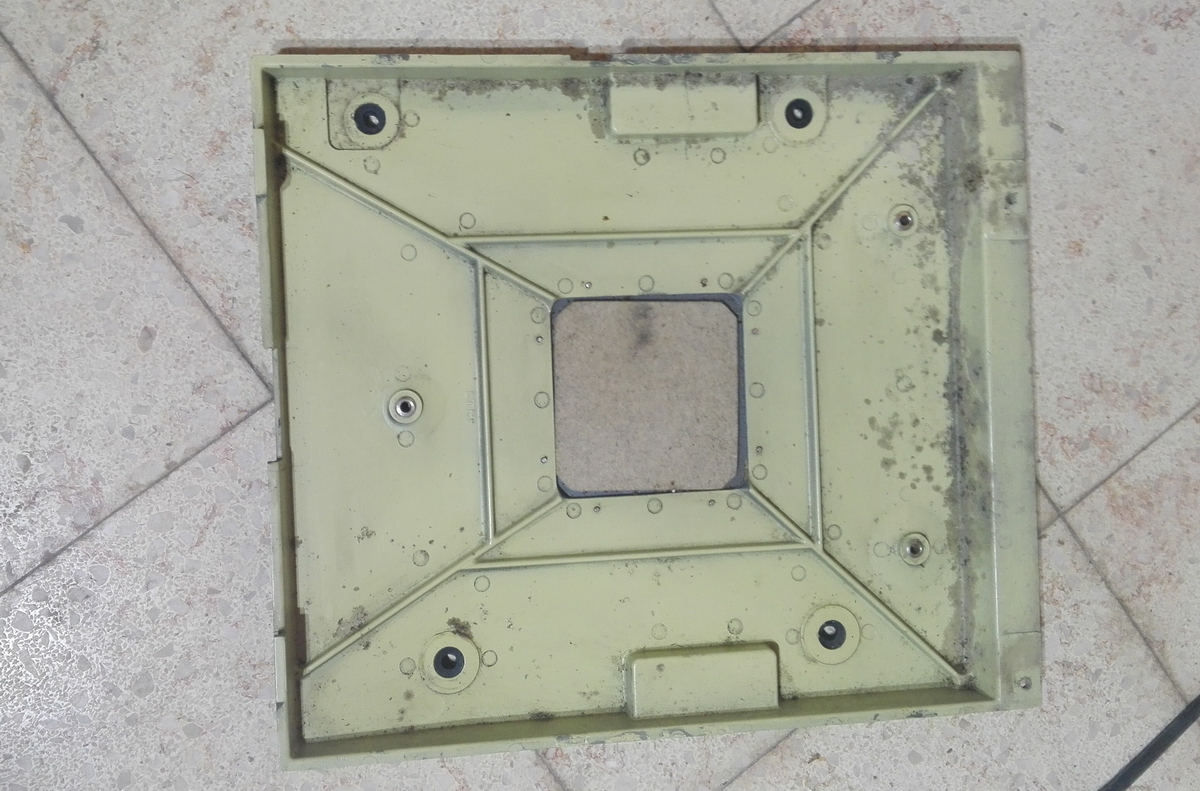
The light green is probably a Chromium-containing corrosion preventing primer, as also used in the aircraft industry. It works well, but it's toxic ...
The inside of the plastic housing is completely covered in a felt-like sound-dampening material, which unfortunately is apparently rather liked by moths.
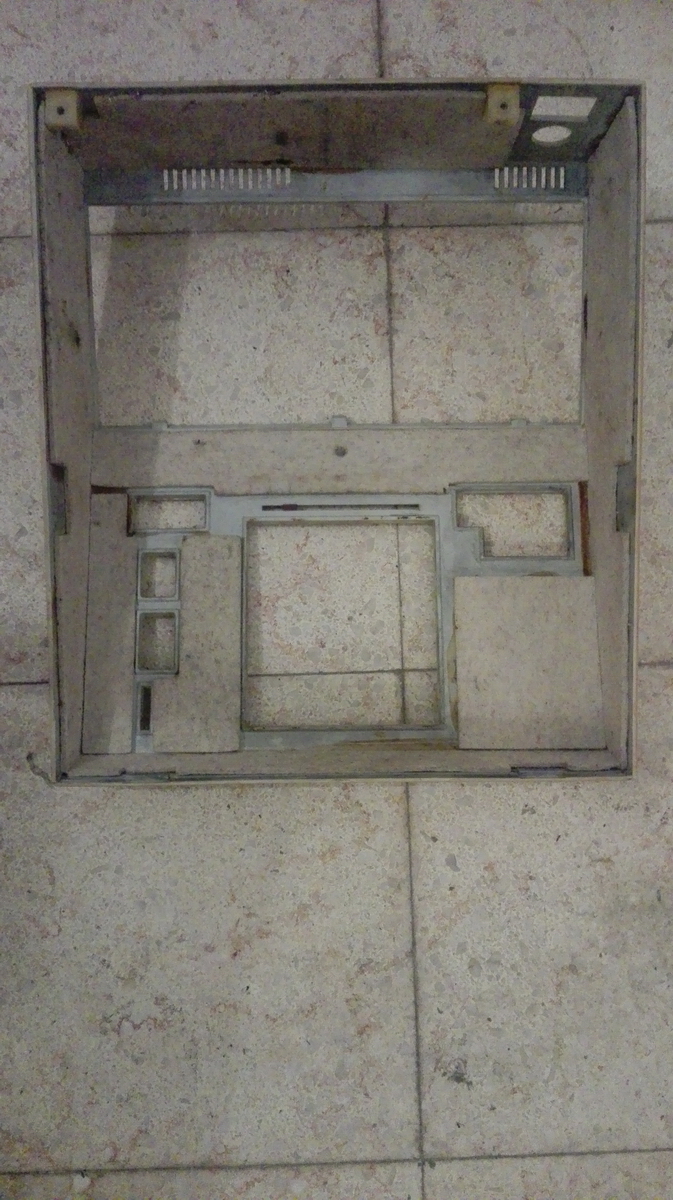
Not only was part of it messily chewed away, to add insult to injury, I even found a dead moth inside the machine. So there was a substantial amount of mess when I opened the machine.
The way to revive the machine became even more messy though. Once the housing was taken off, I sprayed everything down with a teflon-containing lubricant. There is an axle sticking out the right side of the machine for turning it through manually with a crank or knob. A drill chuck works just fine for this. However ... this is only possible for calculating operations which do not require the carriage to move or clear, because that does require the motor, no way around it. So I attached a suitable knob, tried an addition or two, this worked, then I pressed a carriage movement button, and nothing happened anymore. Manually (and laboriously) turning the motor veeeeery slowly shifted the carriage a position. The same happened with the clearing. I was relatively certain at this point that the machine would work, so I found a suitable power cord, plugged it in, and oh my, did it work! Addition, subtraction, multiplication were no problem, neither was the clearing of the registers nor the movement of the carriage - it really seemed to only need a good clean. So I decided to risk trying a division ...and sure enough, there appeared to be no problem! Negative division too, everything was hunky dory. This thing is built like a tank!
So... I took it off the base plate to clean. I would call that a big mistake, because it is impossible to hold without touching at least four or five linkages, of which god only knows what they operate.
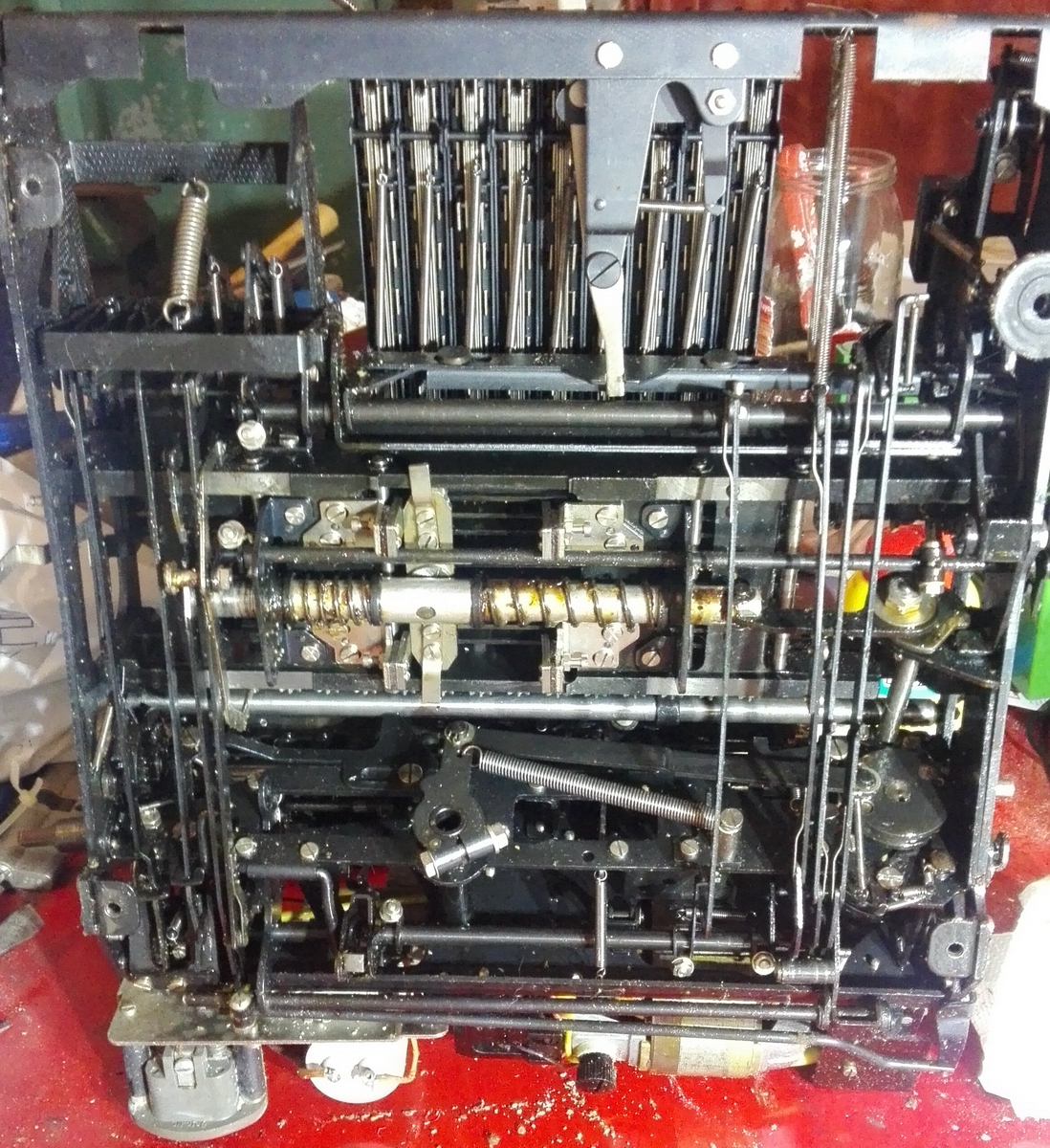
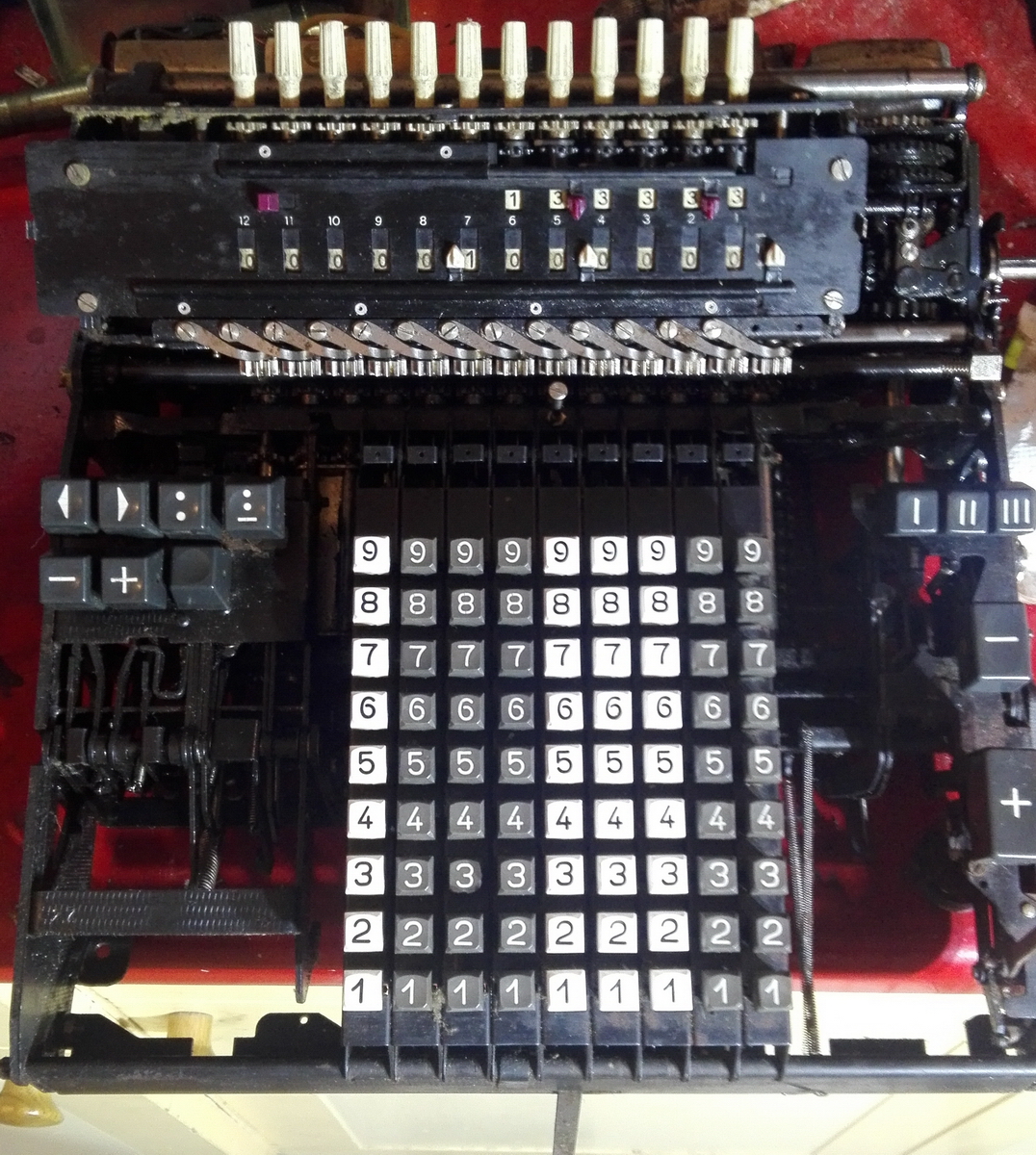
But I did clean the machine and the baseplate, and then remounted it on the base.
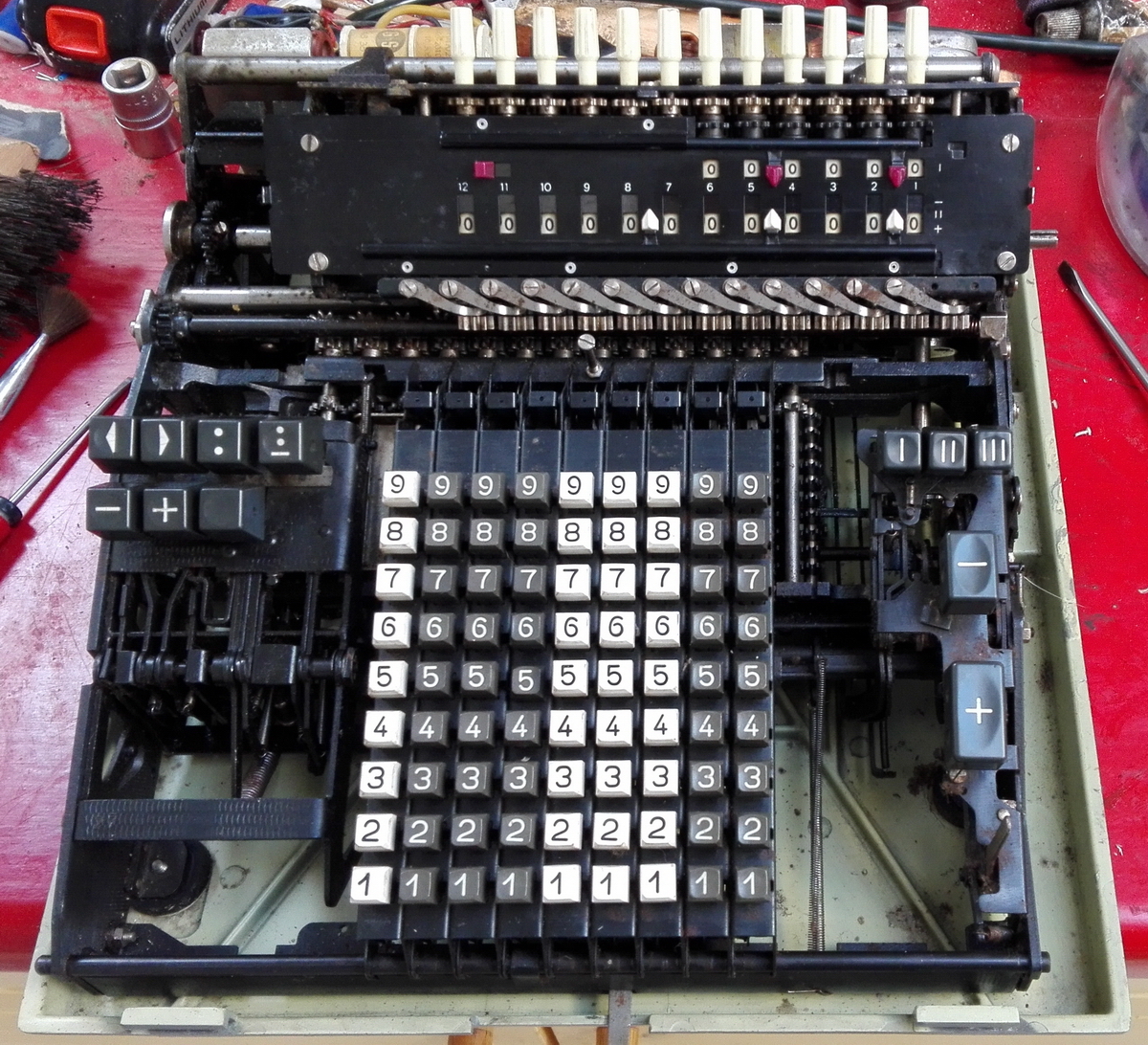
I plugged it in, and the motor started running, without the machine doing anything. All of the buttons were blocked, apart from the "move carriage left" button, which didn't seem to engage anything at all, indicating that this might be part of the problem. So ...a deep sigh, and we're taking everything off the baseplate again, to see whether I could find where the problem was. The on-off switch for the motor is at the bottom of the machine (in that bakelite box), and there is a pawl operating an insulated switch.
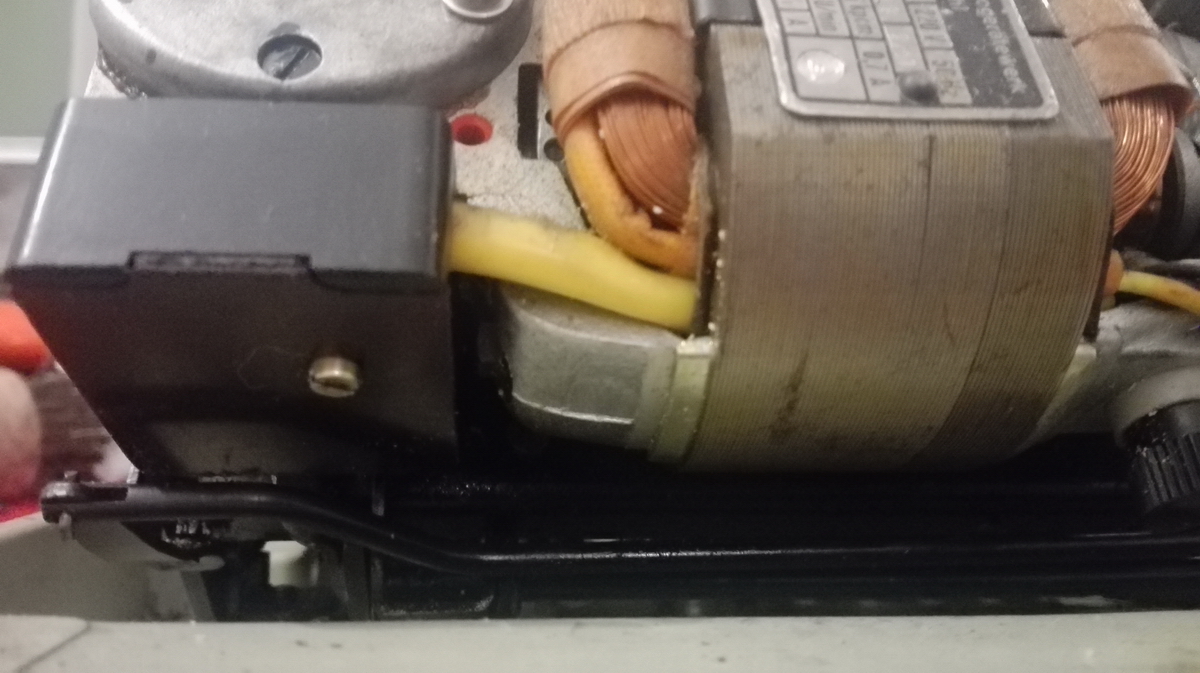
This switch was firmly closed (which was why the motor was running, obviously). The other end of the pawl/lever disappeared somewhere in the dark innards of the machine behind the bevel drive from the motor. The motor is in the midde here, the bevel drive at the left, and the speed regulator (which operates by a centrifugal governor pressing open an on-off switch, so overspeed momentarily breaks the current to the motor, until it slows down and the switch closes again. Crude but effective. And a bit sparky. More about that later ...
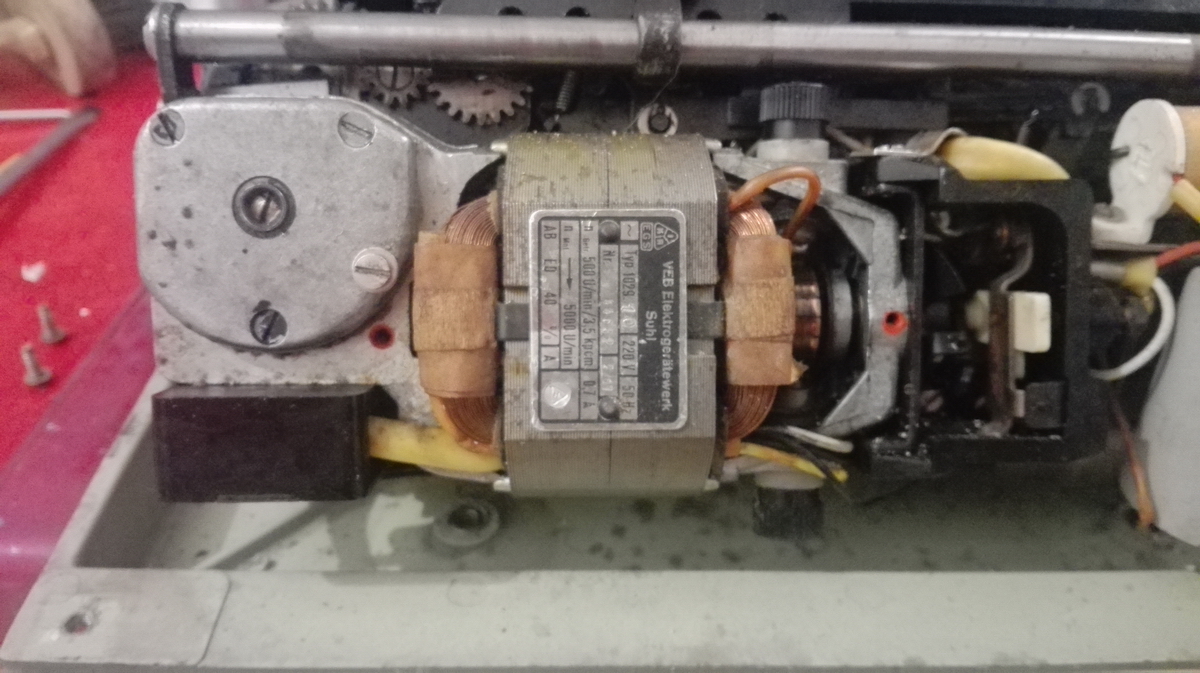
So I took the motor off (which again, because it's such a good design, was very easy!). Now I had access to the actual main axle of the machine, which could be turned by hand with a pair of flat-nose pliers. Wonderful. This did not, however, appear to solve the problem. I was still convinced that the carriage had something to do with it, because the gear with two prongs that moves the carriage one position through a comb-shaped part by turning 180 degrees, seemed to be in an somewhat odd position. This is invisible in the picture below, because the gear with the prongs is hidden behind the carriage rail.
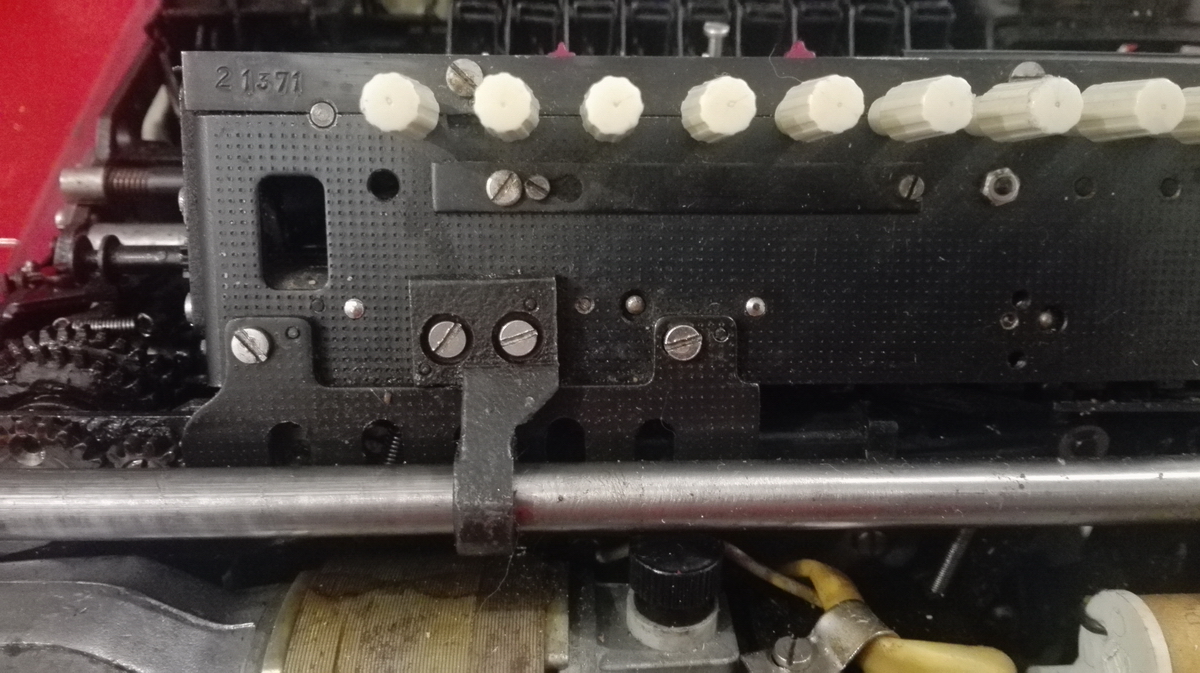
I undid one of the attachment points to the carriage (two screws) undid the comb (again, only two screws) and took those off - now the carriage was free to slide left to right, and it became obvious that the button for "carriage left" being inoperable had nothing to do with the problem. There is a sensor lever at the left end of travel for the carriage, as well as at the right, that disengages the respective button when the carriage is at the end of its travel.
So I then tried to remount the comb and attachment - without success, because the gear seemed to be turned just a bit too far. So I remounted the carriage one position to the right from where it was. That worked fine, and after remounting the motor and plugging the thing in, it whirred briefly, and everything was again as it should. ... or was it ?
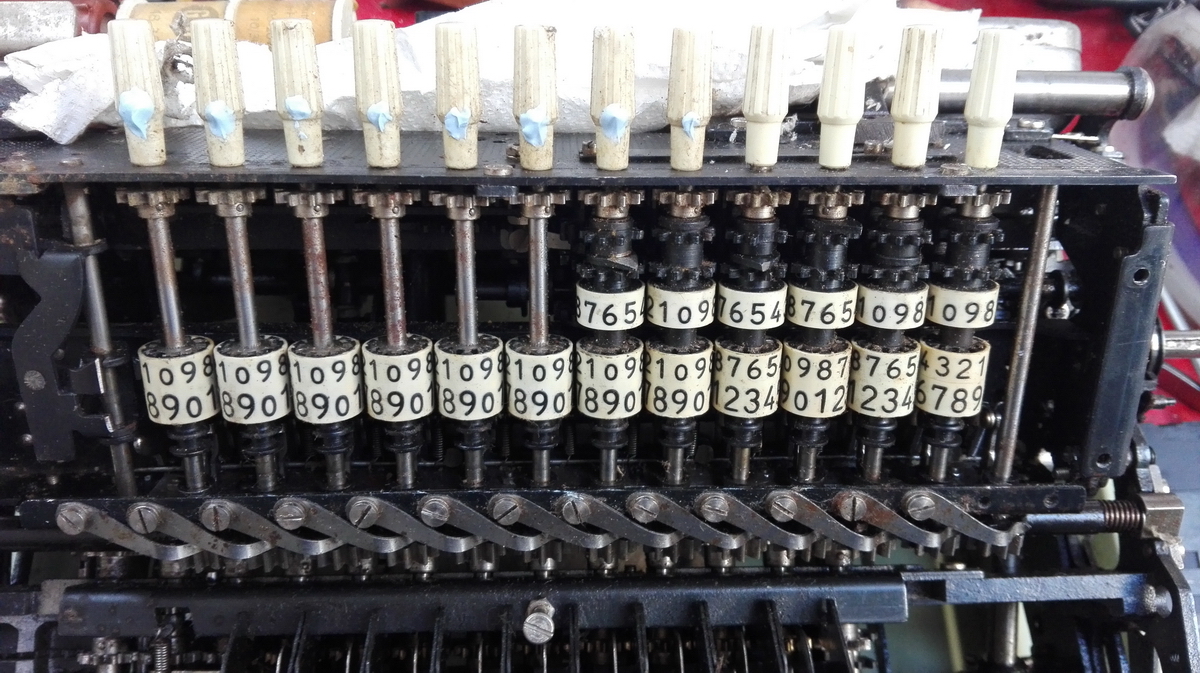
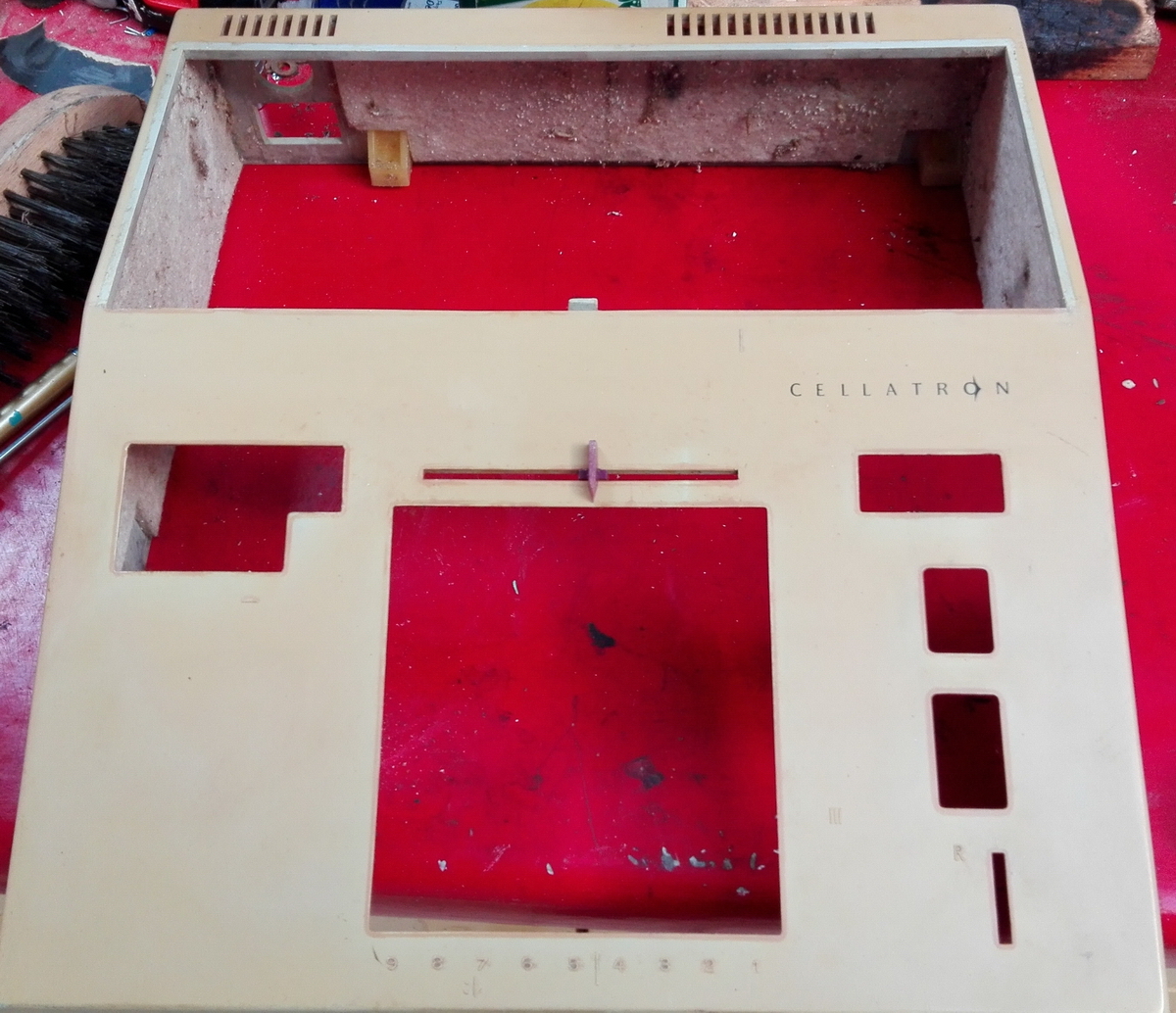
I cleaned up the plastic of the housing and the manual entry knobs for the result register, put everything back together, took some pictures of the ugly creature, and wanted to make a video of it, demonstrating all its features. That went quite well, until I got to division. I put in something like 37, divided by 5, and got complete nonsense, at least if the machine didn't stay running endlessly halfway through the calculation. Woops. What had gone wrong ? The problem is that the machine runs at 500 rpm - that is so fast, that you have difficulty seeing what it is trying to do during a division. So it took quite a bit of experimenting to find out that both on positive and negative division, the machine appeared to start on the first digit of the dividend by adding instead of subtracting. I figured something would be stuck or sticky in the steering mechanism for the result register, and thought it might resolve itself by adding another dose of oil. That decision turned my restoration into the second most exciting one I've ever been involved in, because I only took the dark grey top cover off the machine, and then everything on and around the carriage can be reached, and it can even be done without taking out any screws. So a few squirts of lubricant here and there ... try a division ... (no doubt, if you had experience repairing calculators from back in the day -or anything else involving sparks for that matter- you are now already seeing what is going to happen from a mile away, aren't you ?) ... and ...WHOOMP - large orange and blue flames are shooting from all around the opening in the top of the machine, luckily only to extinguish themselves after a second or so, because they ran out of fuel. I had filled the housing with flammable solvent vapour from the spray can. Way to go, Cris! Cellatron flambé, anyone ? In the meantime the machine happily kept trying to divide, giving the exact same erroneous result as before, after the smoke cleared (but the smell lingered).
So that left me with the assignment to find, preferably without having to take the machine off the base plate again, what exactly determined the direction of the operations when dividing, and this without a way to divide manually and more slowly, because every time an addition/subtraction operation finished, and the carriage needed to shift, the axle that can be manually operated would block, and the motor would be needed to shift the carriage. After half an hour of this, I left the machine for a while, to think about the problem, and compare with a manual Mercedes-Euklid 29. This led to me understanding that the tens carry overflow at the left end of the carriage switches a kind of "flap" sitting under the carriage, and this is what does the direction switching during division. Indeed, the result I got was different in the first digit if I manually switched it in the other direction before starting the division. After mulling over that for another half hour - finally the penny dropped. The initial direction of operation for division is determined by the carriage position, because the division system of the Mercedes machines is alternating positive and negative - and somehow, this was reversed in this machine. Obviously (in hindsight), the reason is that the steering originates from the gear wheel that moves the carriage, which only turns 180 degrees per position. So if some idiot undoes the carriage and places it back one position to the left or right - as I did trying to solve the problem with the motor that kept running- then you screw up the division process. Well, four screws later, and putting the carriage one position to the left again, everything works again.... or so I thought.
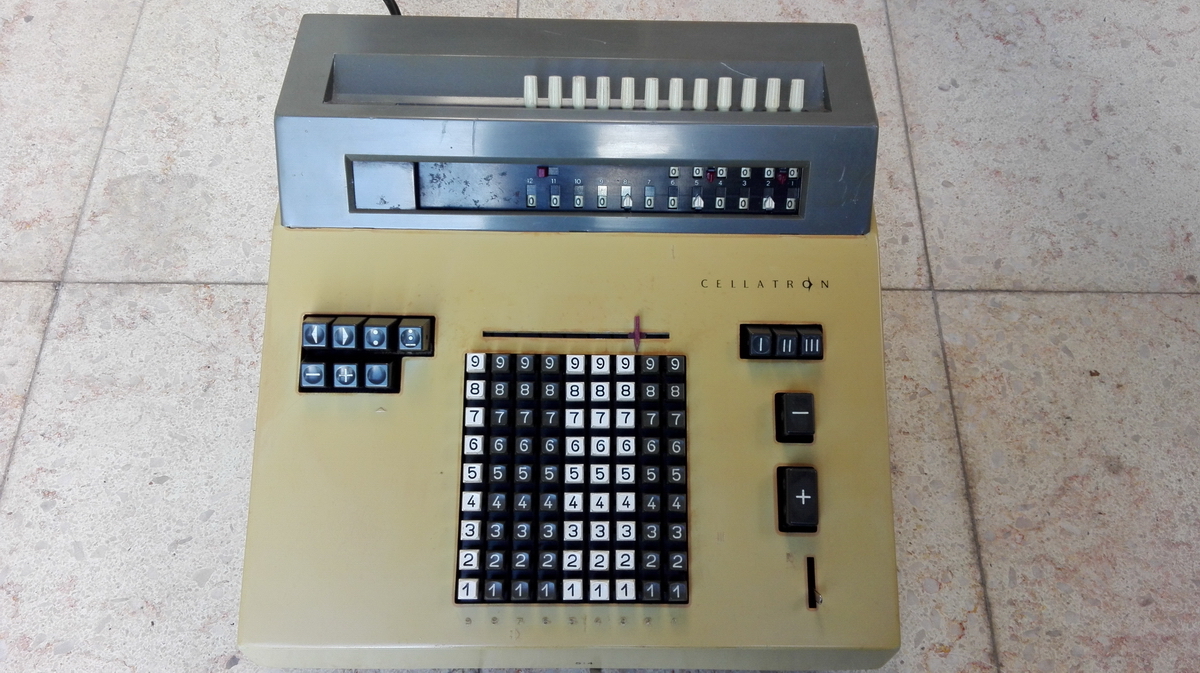
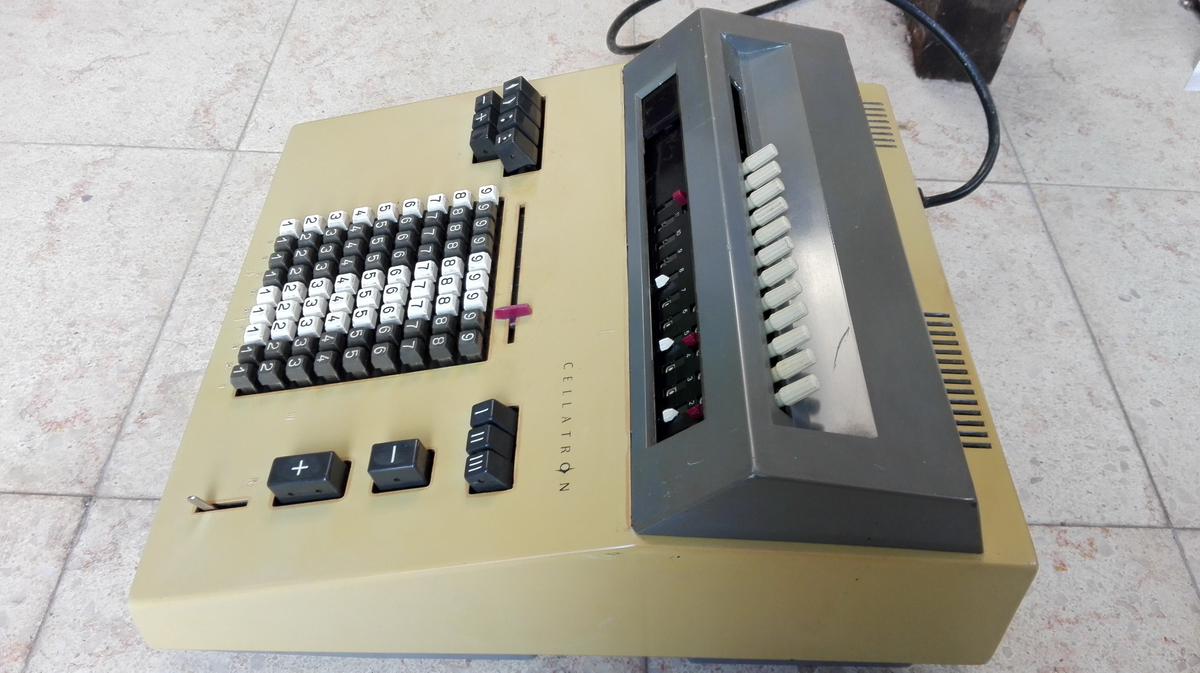
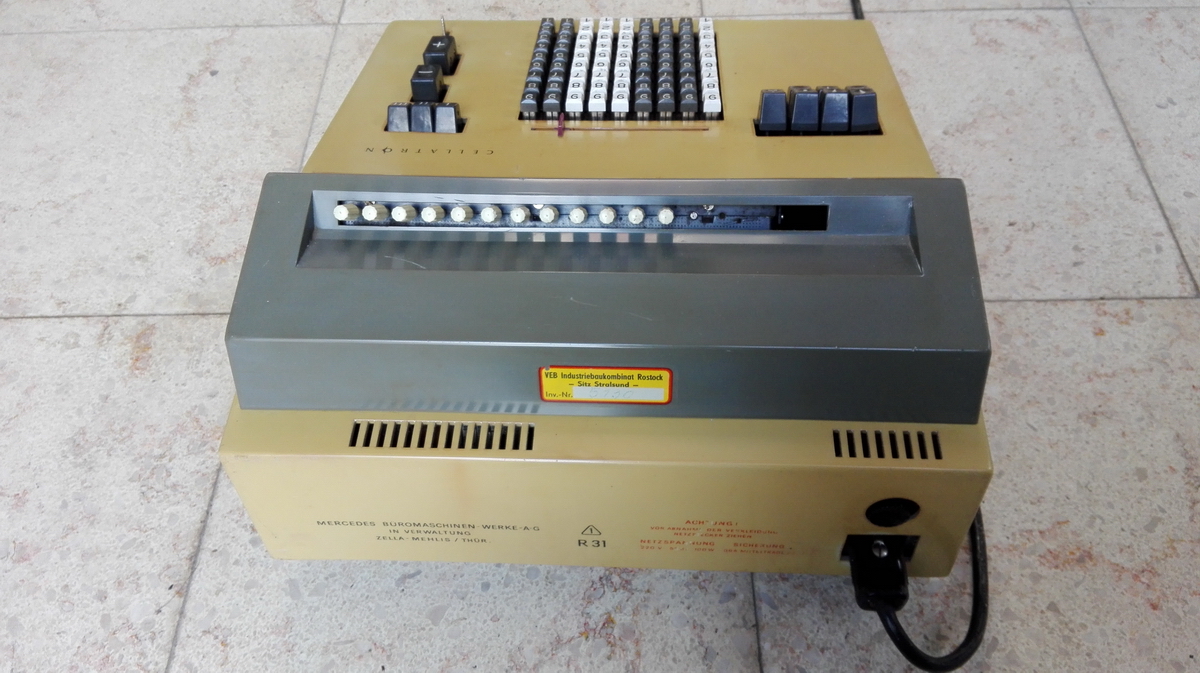
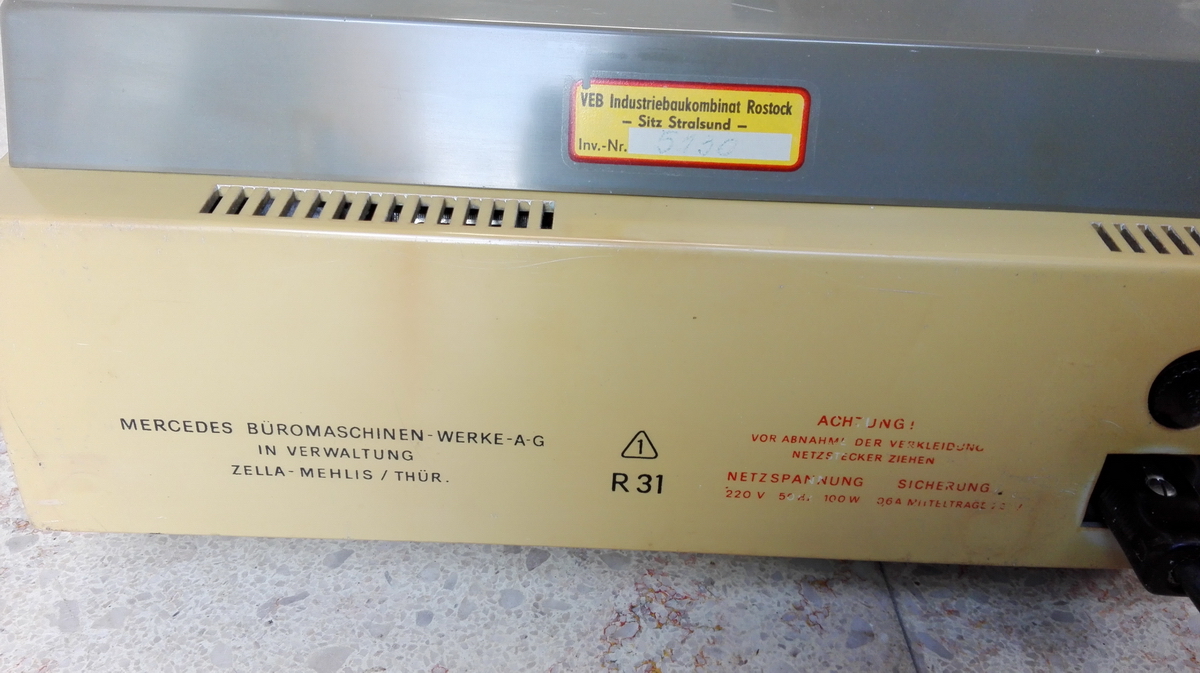
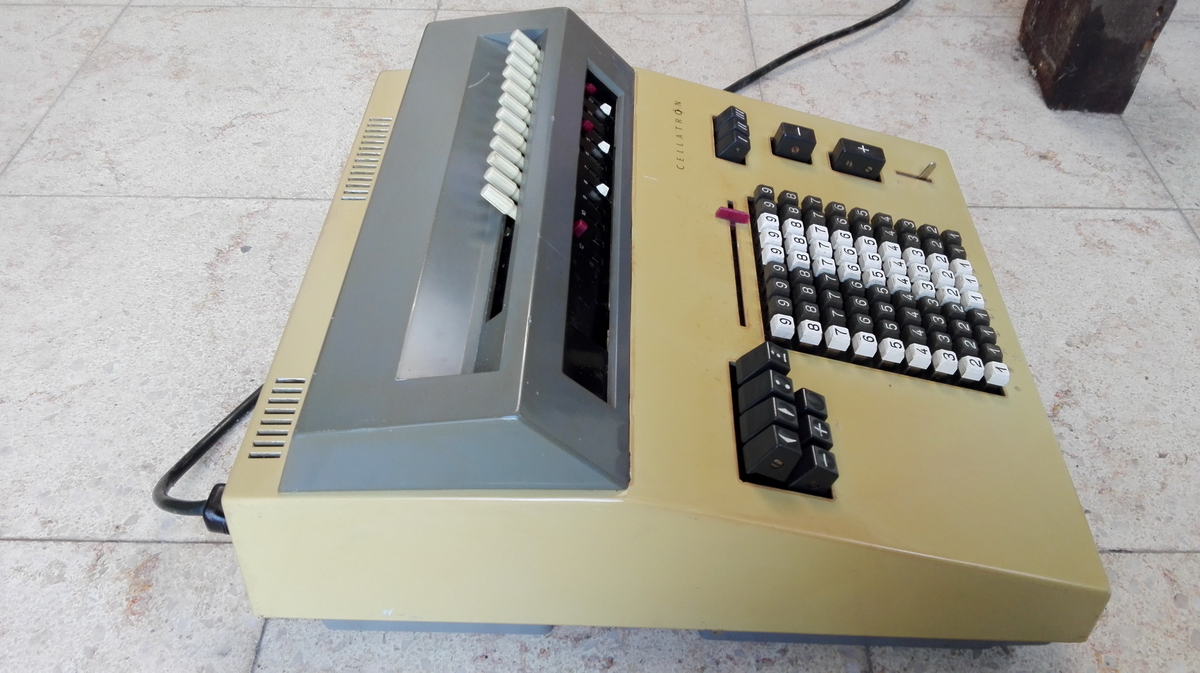
The next thing that went wrong is that the machine had an issue with tens carries. In some positions, the carry is marginally too slow, and then it misses carrying to the next digit. So if you run a series of additions, followed by an equal series of subtractions of the same number, you may not end up with zero in the result register. THis is especially true, for some reason, with 2s, 3s and 7s, probably to do with the internal timing of the carries. As I was working on the machine in January, and my workshop is not warmer than 15 degrees, this was a real problem. As the weather heated up, the problem went away, and the machine, now at a comfortable 20°C, nicely comes back to zero every time. However, it now messes up the division process in yet another way, not stopping and shifting the carriage right when it should. For that reason, there is no video of the machine yet, until I succeed in solving that issue as well. In the result register, there is a provision to switch the register to complements. In that case, the rightmost 0 is red, to alert the user to this.
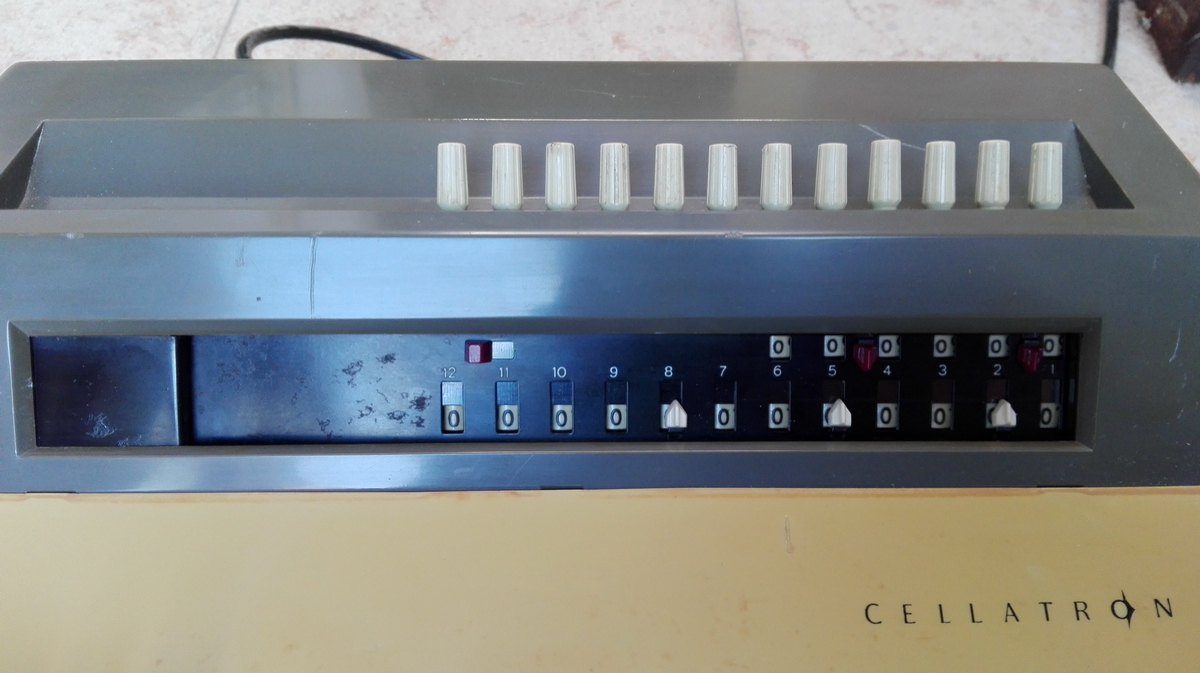
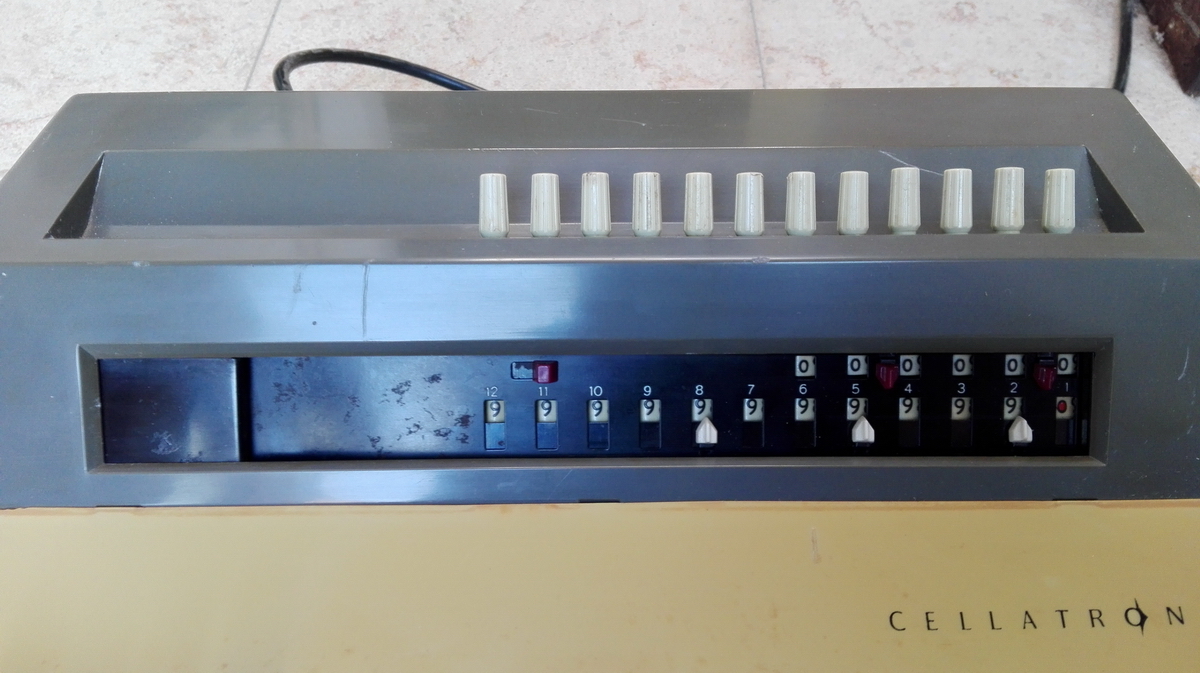
There's a very interesting system with sliding metal flaps on both the left and right side of the carriage, that make there are never any holes next to the carriage that would allow dirt or dust (or moths) to get in.
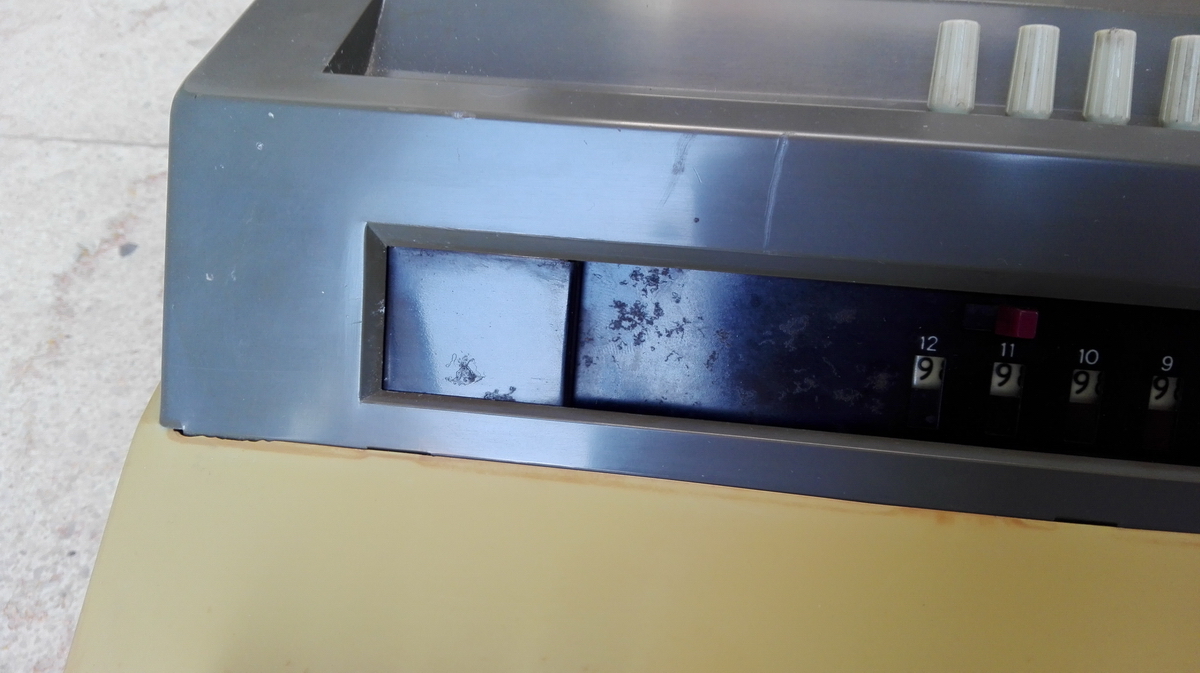
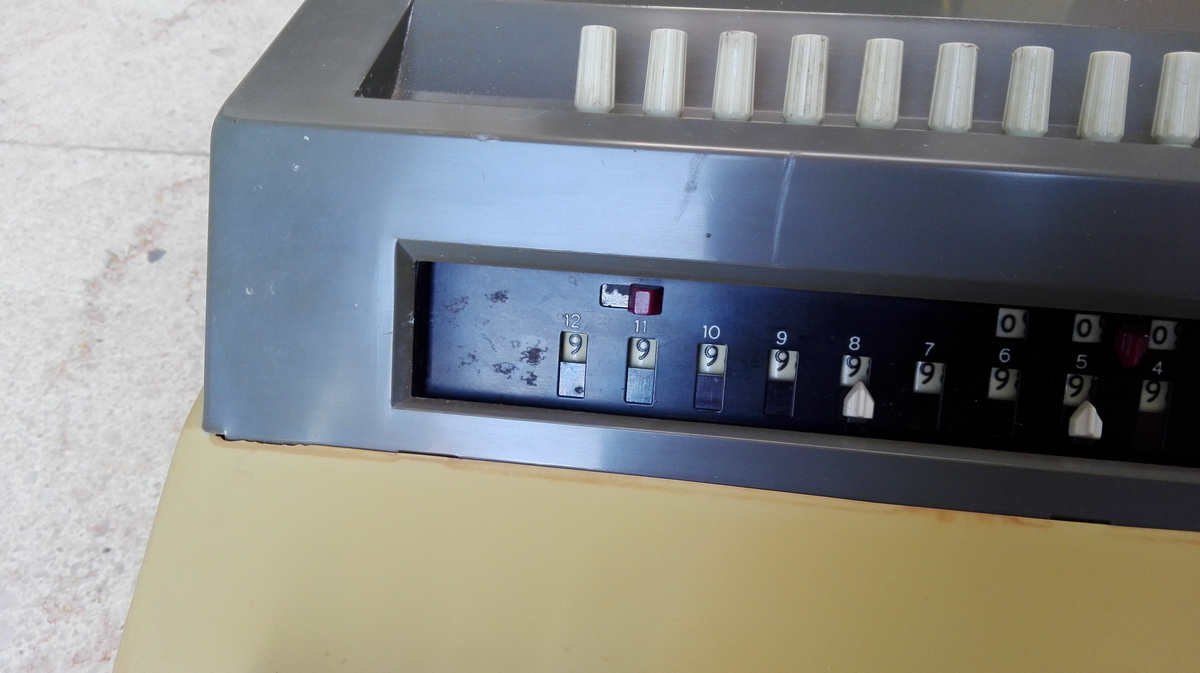
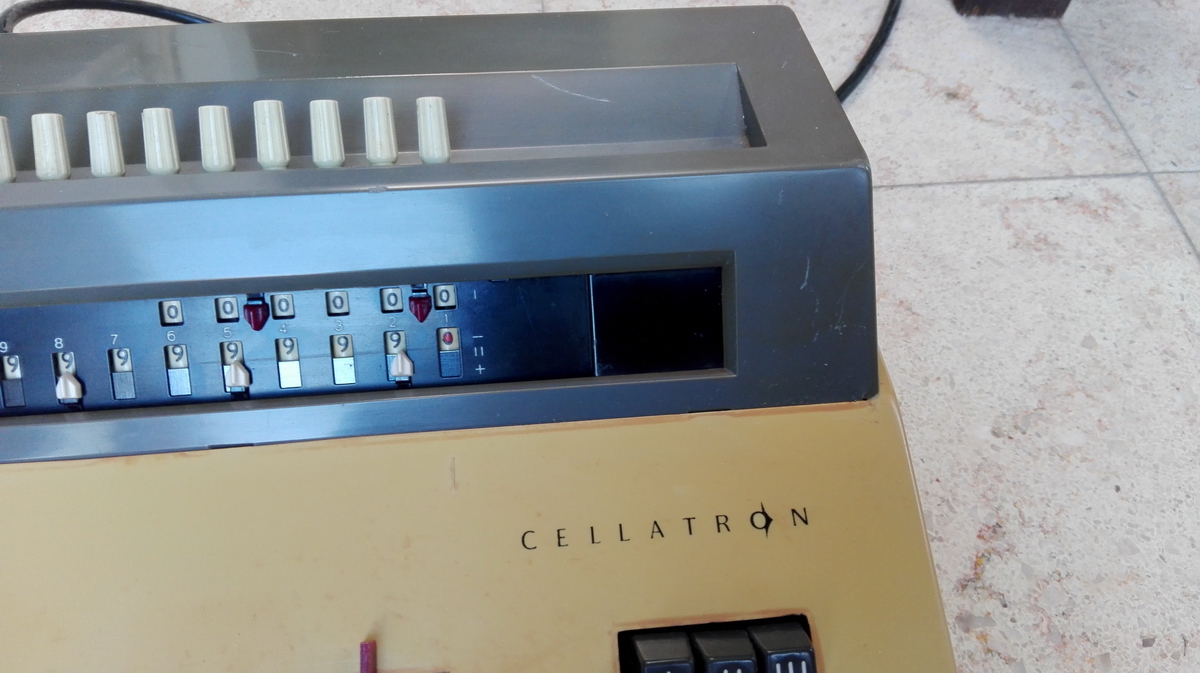
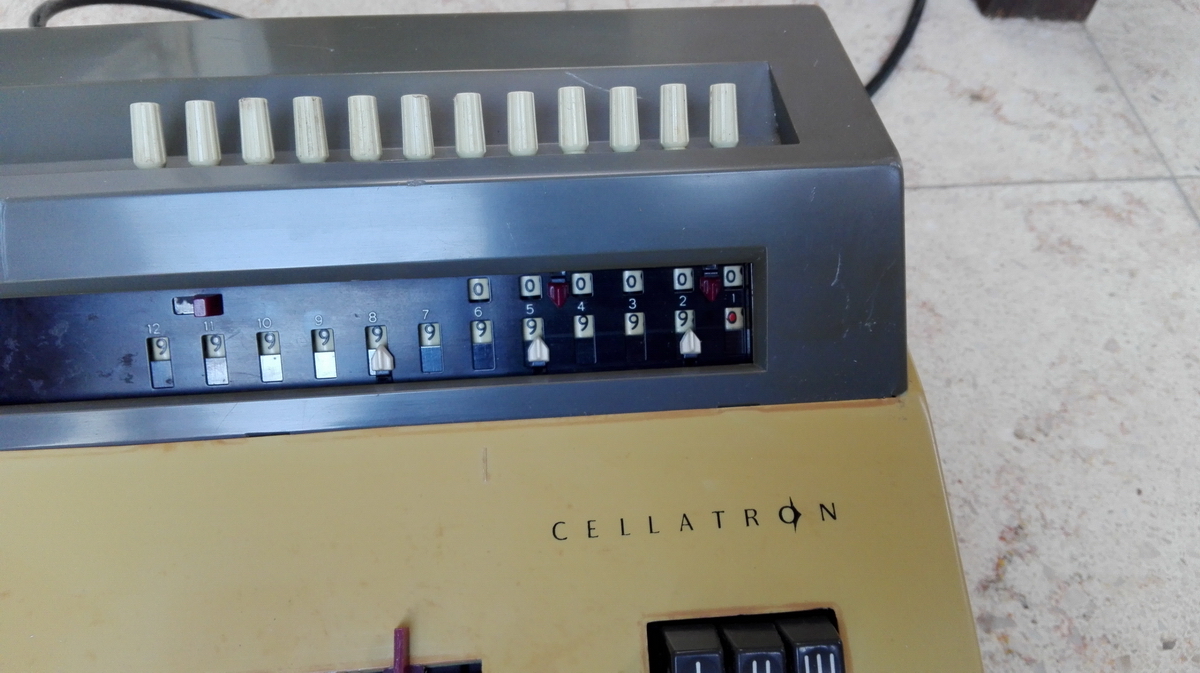
There is also a manual available for this machine - it can be found here, under "sonstige".
It also contains a warranty card, that shows that machine N° 215594 was delivered in May 1967, and sold in December of that year. There is an R31 in the Computarium, which has a serial number of 220222. Since apparently approximately 13000 machines were built per year (according to Reese and Anthes, 2000), and that serial numbers are common to all machine ranges, that puts my machine, with serial N° 214028, at the beginning (February-March?) of 1967.
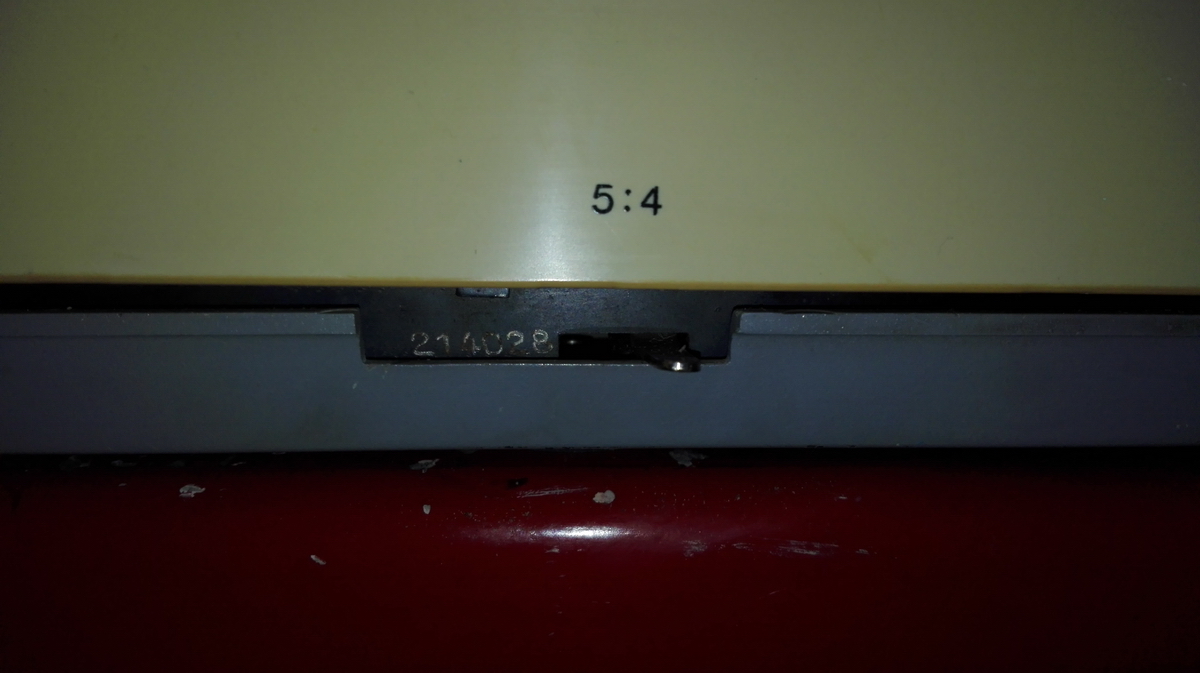
Production carried on until 1975, and serial number 330000 - a LOT of these machines (and the R43 and R44) were apparently produced. (But not that many are left ?)
I'll also go briefly over the buttons and levers. Clearing is rather self-explanatory - The buttons with I, II and II clear the registers so labeled. Although the keyboard can act a little weirdly, because of the lever at the front of the machine labeled 5:4, which splits the keyboard in 5 and 4 columns, the rightmost 4 of which are not cleared at all. This is meant for divisions of small numbers, and the manual specifies a method where you set the divisor on the right and dividend on the left, allowing a double check of the keyboard, pressing "add", which will add both to the carriage and clear the dividend, then subtract, which subtracts the divisor back out of the carriage and clears the 1 in the counter, then press divide, which runs the carriage to the right and starts a division. It works, surely - but why make things more complicated than they really are? The "R" lever is a repeat lever for addition, if it is switched downwards ("non-repeat"), then numbers in the keyboard are cleared after one cycle. Using the multiplication + or - buttons on the left never clears the keyboard. On the left side are the repeated addition and subtraction buttons, the carriage movement buttons, and the positive and negative division buttons. The only difference between negative and positive division is that at the end of it, for negative division, the counter contains the complement of the quotient, instead of the quotient itself. The unlabeled mystery button changes the direction of the counter register (but not during division) - when out, the counter counts postively, when in its halfway position, the counter doesn't do anything at all, and when pushed all the way down, it counts negatively. It needs to be pushed to the back of the machine to unlock and spring back up. There is one more lever on the bottom left side of the machine, which is the division cancel lever, that immediately stops and running division.
So that's it, until I manage to fix my division issue ...
